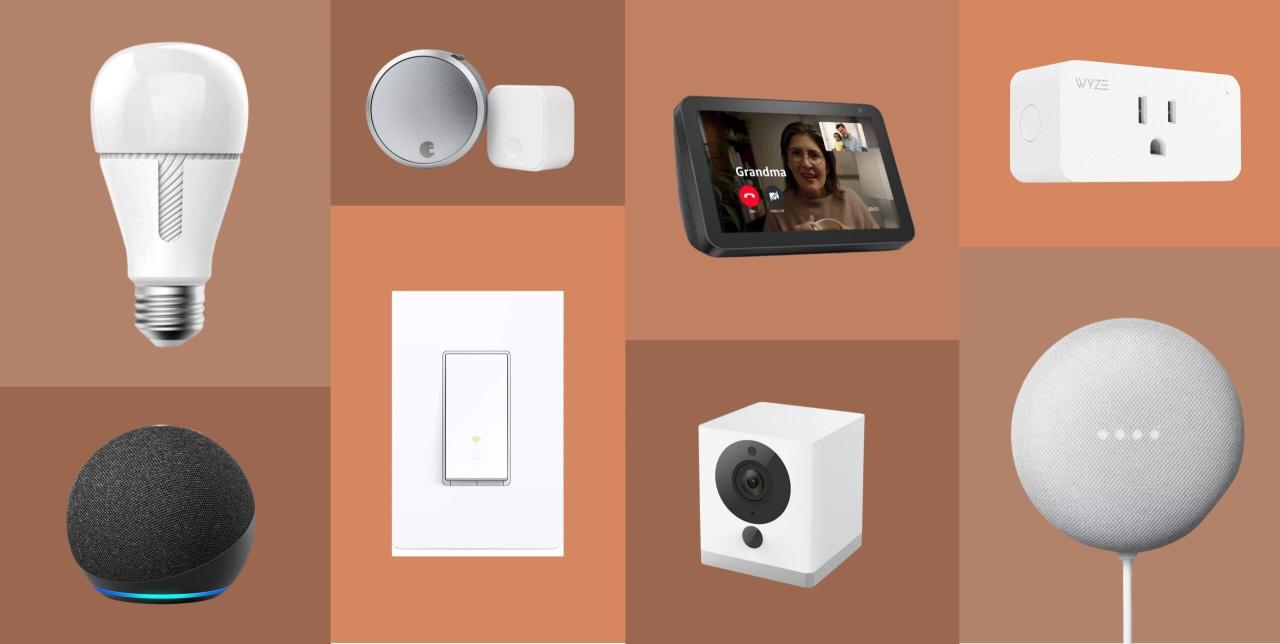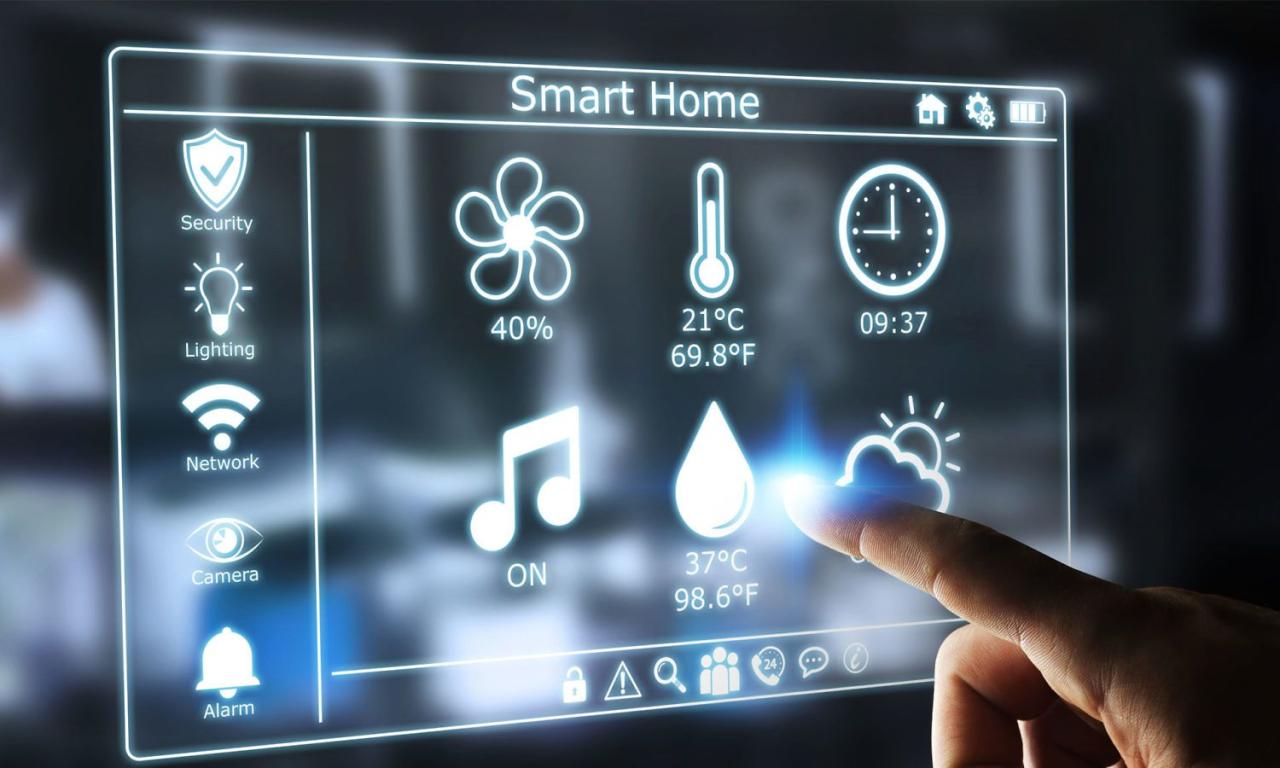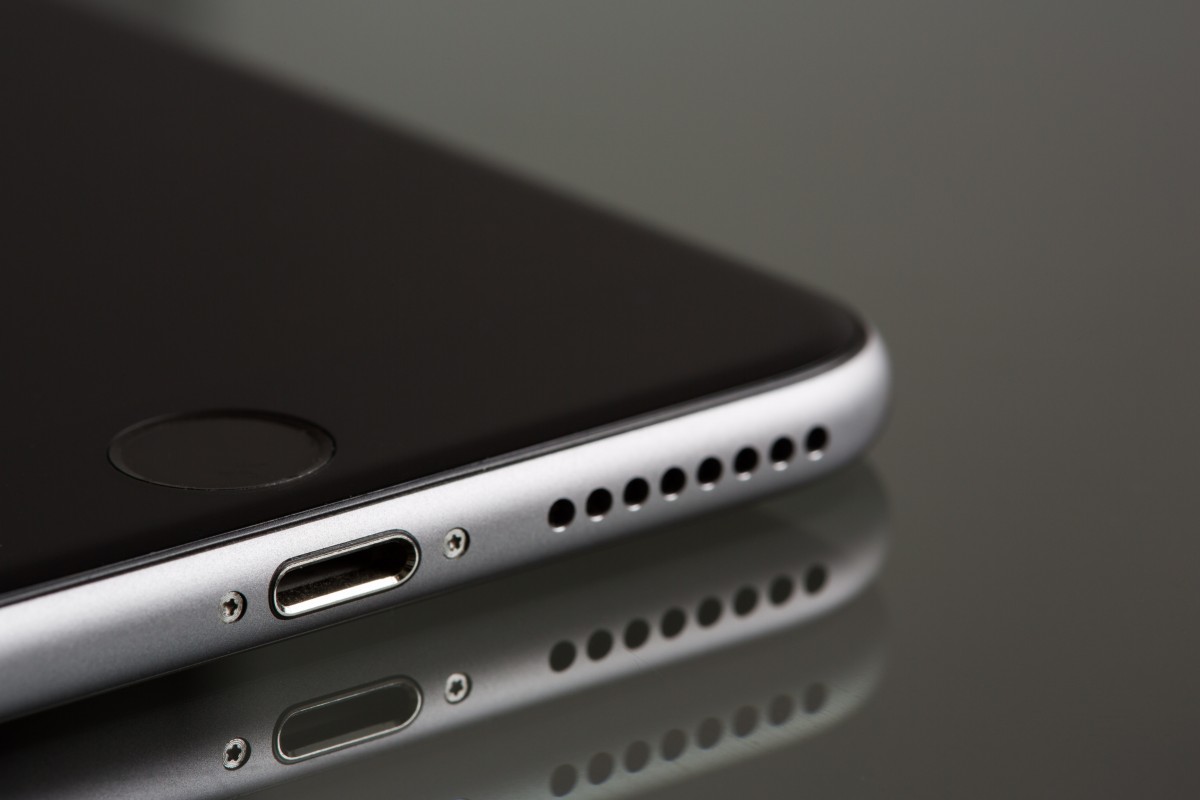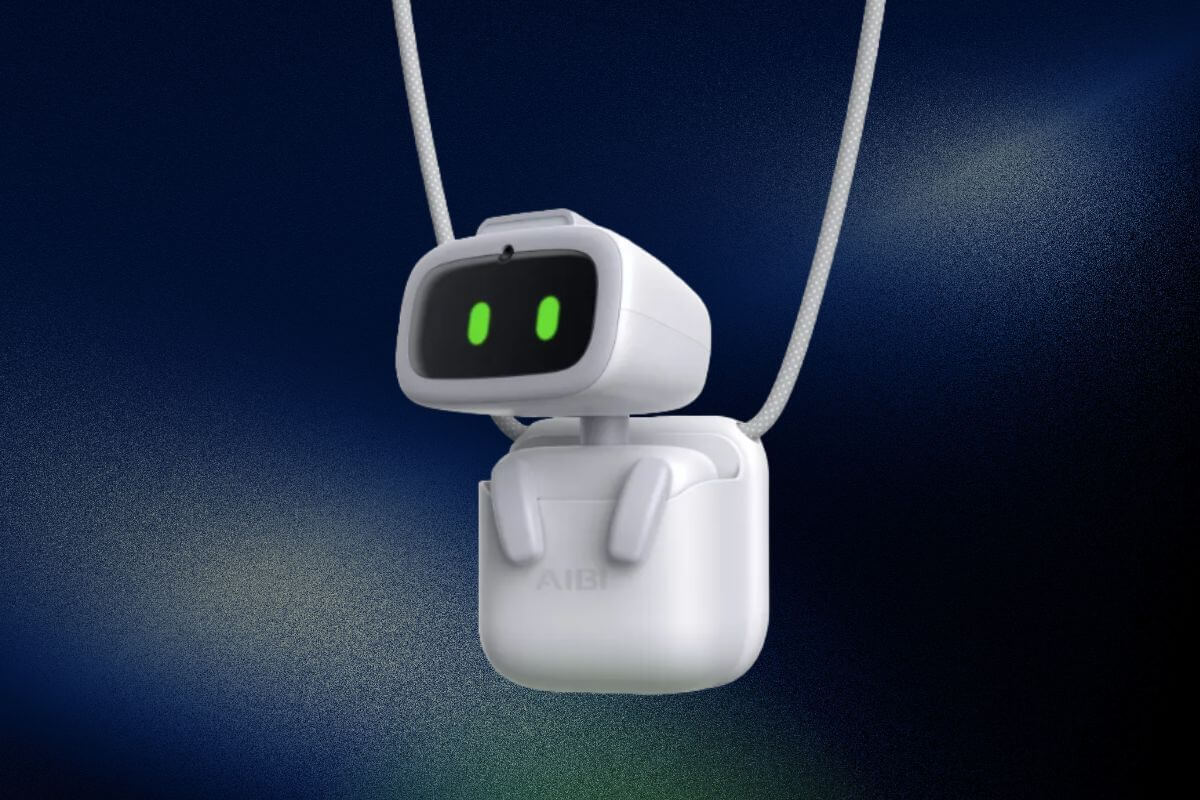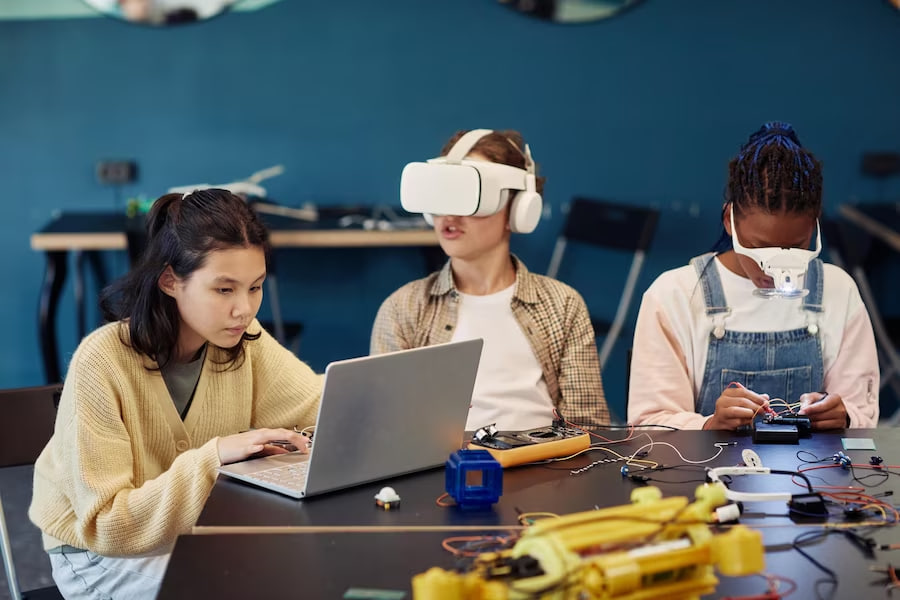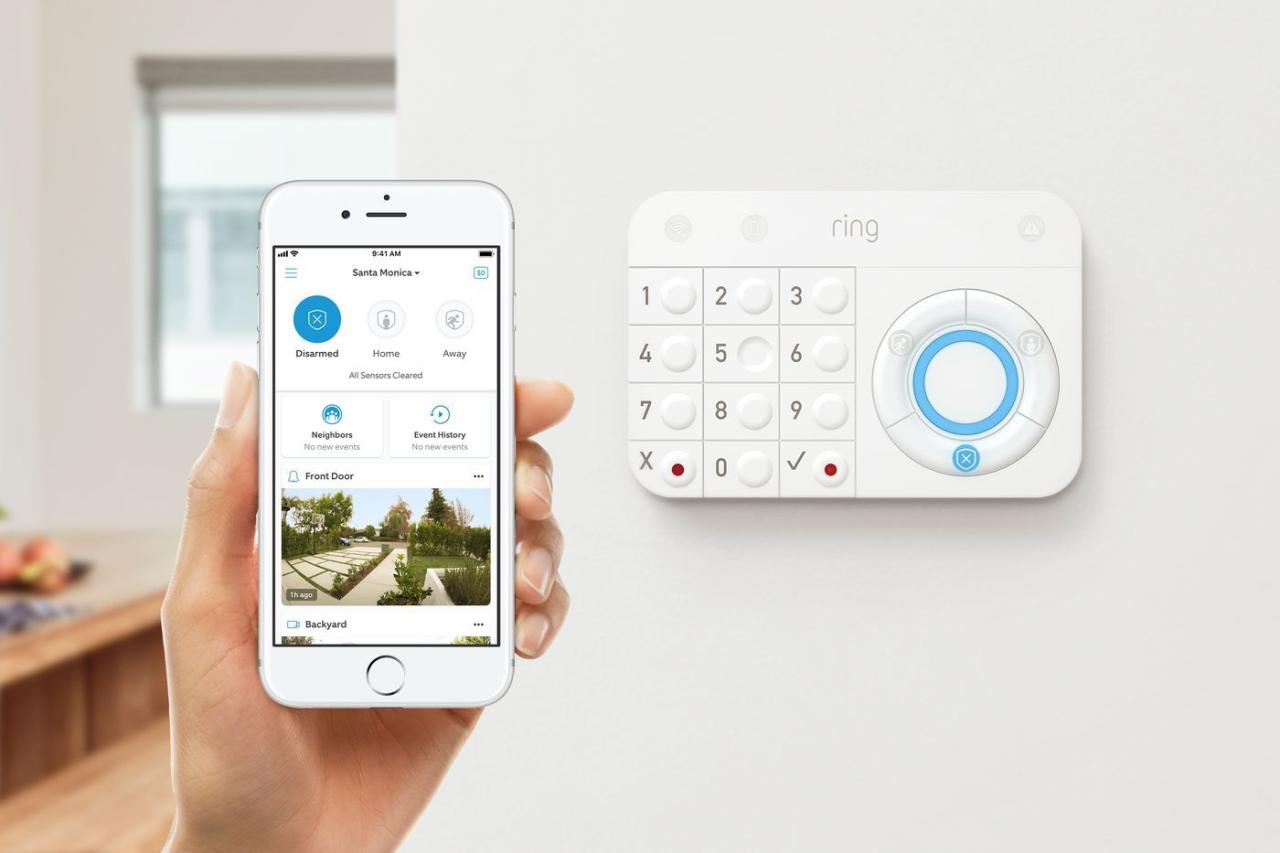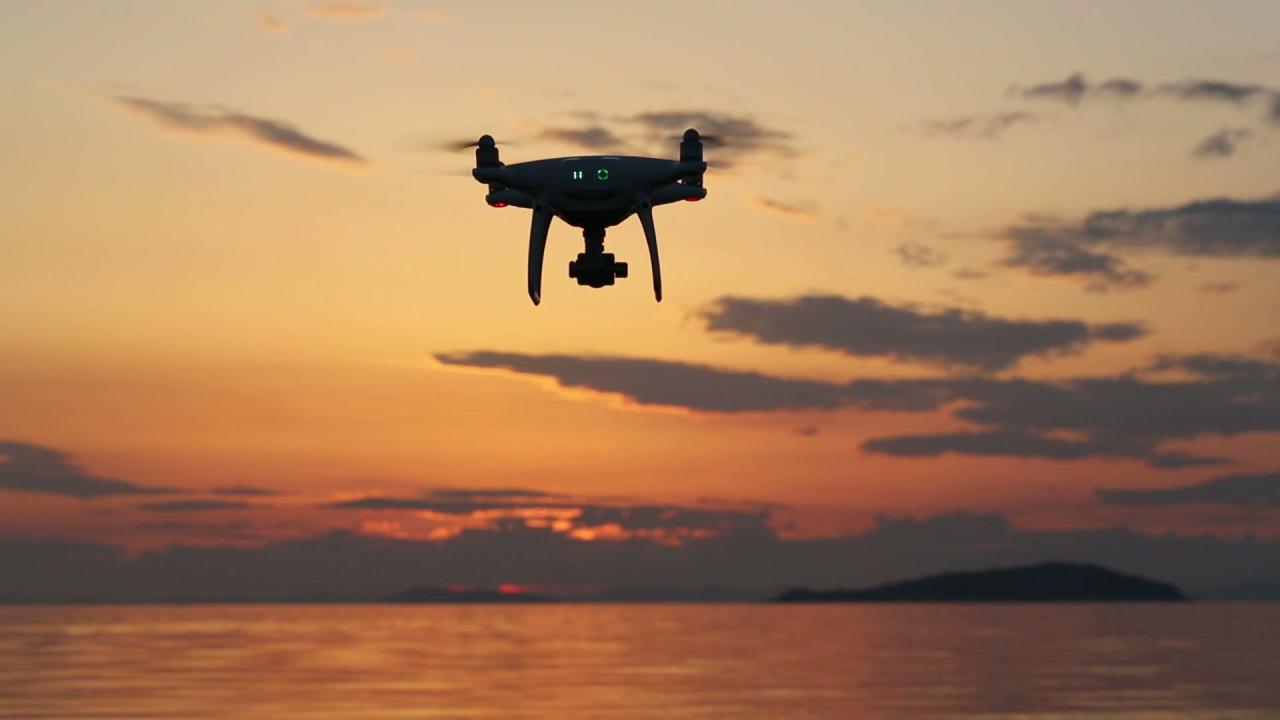Navigating the Connected World: An Essential Guide to Smart Devices
In an era defined by relentless technological acceleration, smart devices have transitioned from aspirational concepts to indispensable components of daily life. They are no longer mere novelties; rather, they represent the vanguard of innovation, meticulously engineered to simplify complex tasks, enhance personal well-being, and profoundly enrich our recreational pursuits. From the moment we awaken until we drift into slumber, these intelligent gadgets seamlessly integrate into our routines, transforming mundane activities into streamlined, intuitive experiences. This comprehensive guide serves as your authoritative compass in the vast and ever-expanding landscape of connected technology. We delve deep into the most impactful smart devices across various categories, providing insightful reviews and highlighting the key innovations that are currently reshaping the contours of modern living. Our objective is to empower you with the knowledge to make informed decisions, ensuring your investments in technology genuinely elevate your quality of life. Understanding their capabilities, limitations, and future potential is paramount in this rapidly evolving digital ecosystem.
Defining Intelligence: What Makes a Device “Smart”?
Before embarking on our deep dive into specific product categories, it’s crucial to establish a foundational understanding of what precisely constitutes a “smart device.” Beyond mere internet connectivity, a truly smart device possesses inherent characteristics that elevate it above conventional electronics.
A. Connectivity and Communication
At its core, a smart device is distinguished by its ability to connect to a network, typically Wi-Fi, Bluetooth, or cellular data. This connectivity enables it to communicate with other devices, cloud services, and, most importantly, with you, the user. This forms the backbone of any intelligent ecosystem, allowing for remote control and data exchange. Newer protocols like Thread and Matter are further enhancing cross-platform compatibility, promising a more unified smart home experience.
B. Sensor Integration
Smart devices are replete with various sensors that gather real-time data from their environment. This could include temperature sensors in a thermostat, motion sensors in a security camera, heart rate sensors in a smartwatch, or even air quality sensors in a purifier. This collected data is fundamental for the device’s intelligent decision-making.
C. Data Processing and AI/ML Capabilities
The “smart” in smart devices truly manifests in their capacity for on-device or cloud-based data processing. Leveraging Artificial Intelligence (AI) and Machine Learning (ML) algorithms, these devices can analyze sensor data, learn from user behavior, and make autonomous decisions or provide intelligent recommendations. This is where a smart speaker understands your voice commands, or a smart thermostat learns your preferred temperature schedule.
D. Automation and Personalization
A hallmark of smart technology is the ability to automate tasks based on predefined rules, schedules, or learned behaviors. This extends to personalizing experiences to individual preferences, whether it’s dimming lights at bedtime, brewing coffee upon waking, or suggesting a workout based on your fitness goals. The aim is to simplify your life by taking repetitive actions off your hands.
E. User Interaction and Control
While often operating autonomously, smart devices typically offer multiple avenues for user interaction. This includes voice commands, intuitive mobile applications, physical buttons, or even gestures. The ease and versatility of control are critical for user adoption and satisfaction.
The Intelligent Abode: Top Smart Home Devices
The smart home ecosystem continues to be the flagship domain for smart device innovation, transforming houses into responsive, intuitive living spaces. The emphasis is on convenience, security, and energy efficiency.
A. Smart Hubs and Voice Assistants: The Central Command
The heart of most smart homes beats within its smart hub or voice assistant. Devices like the Amazon Echo series (Echo Dot, Echo Show) and Google Nest devices (Nest Hub, Nest Mini) have become ubiquitous. The latest iterations offer improved audio quality, more responsive AI, and richer visual displays. The Google Nest Hub Max, for example, integrates a camera for video calls and security monitoring, while the Amazon Echo Show 10 features a screen that rotates to keep you in frame during calls. For Apple users, the HomePod Mini offers deep integration with the HomeKit ecosystem and Apple Music.
- Key Innovations: Enhanced far-field voice recognition, improved local processing for faster command execution, integration of visual AI for contextual responses, and a growing emphasis on Matter compatibility for broader interoperability across brands. These devices are becoming true central nervous systems for the home.
B. Smart Lighting Systems: Ambiance and Efficiency
Beyond simple on/off switches, smart lighting solutions like Philips Hue and Nanoleaf offer unparalleled control over your home’s ambiance and energy consumption.
- Philips Hue: Remains the gold standard, offering a vast array of bulbs, light strips, and fixtures that can change millions of colors and shades of white. Control via app, voice, or smart switches, with sophisticated scene creation and automation based on time of day, presence, or even music sync. The newer Hue Bridge supports Thread, enhancing responsiveness.
- Nanoleaf: Known for its artistic modular light panels that allow users to create custom designs on walls. These integrate with smart home platforms and offer touch control, rhythm modules for music visualization, and dynamic lighting effects.
- Key Innovations: Adaptive lighting that mimics natural sunlight cycles, presence detection for automatic on/off, integration with entertainment systems for immersive experiences, and greater energy efficiency through LED technology and intelligent scheduling.
C. Smart Thermostats: Climate Control with Intelligence
Smart thermostats are pioneers in home automation, delivering significant energy savings by learning your habits and optimizing climate control.
- Google Nest Learning Thermostat: Famous for its ability to learn your preferred temperatures over time and automatically create an energy-saving schedule. It also uses presence detection to turn down the heat or AC when no one is home.
- Ecobee Smart Thermostat Premium: Offers remote sensors to monitor temperature in different rooms, ensuring consistent comfort throughout the house. It also includes an air quality monitor and can integrate with smart vents for granular zone control.
- Key Innovations: Geofencing for automatic adjustments when you leave or arrive, integration with local weather forecasts for proactive adjustments, detailed energy usage reports, and demand response programs with utility companies for further savings.
D. Smart Security: Vigilance and Peace of Mind
Connected security devices provide robust protection and remote monitoring, offering peace of mind whether you’re home or away.
- Video Doorbells (Ring, Google Nest Doorbell): Allow you to see, hear, and speak to visitors from anywhere via your smartphone. They feature motion detection alerts, pre-recorded responses, and cloud storage for video recordings. Latest models offer improved resolution and wider fields of view.
- Smart Cameras (Arlo, Ring, Eufy): Offer high-definition video, night vision, two-way audio, and intelligent motion detection that can differentiate between people, animals, and vehicles. Some models offer local storage options to avoid subscription fees.
- Smart Locks (August, Yale Assure): Replace traditional deadbolts, allowing keyless entry via smartphone, keypad, or even fingerprint. You can grant temporary access to guests or service providers and receive alerts when the door is locked or unlocked. Integration with smart home hubs allows for automation, like locking the door when the alarm is armed.
- Key Innovations: AI-powered object recognition, package detection, facial recognition for known visitors, continuous video recording (CVR) with cloud storage, local edge processing for faster alerts, and integration with emergency services.
E. Smart Appliances: The Connected Kitchen and Laundry
While perhaps not for everyone, smart kitchen and laundry appliances bring convenience and efficiency to daily chores.
- Smart Refrigerators (Samsung Family Hub, LG InstaView): Feature large touchscreens for managing groceries, looking up recipes, playing music, or even leaving digital notes. Internal cameras let you check contents remotely.
- Smart Ovens and Cooktops: Allow remote preheating, recipe integration, and precise temperature control via an app. Some have built-in cameras to monitor cooking progress.
- Smart Washing Machines and Dryers: Offer remote start/stop, cycle selection, and notifications when laundry is done. They can also optimize water and detergent usage based on load size and fabric type.
- Key Innovations: Predictive maintenance alerts, integration with shopping lists and food delivery services, AI-powered recipe suggestions, and energy optimization features that sync with smart grids.
Wearable Technology: Personal Data and Convenience On The Go
Wearable devices have evolved into sophisticated personal assistants and health monitors, seamlessly integrating technology into our daily attire. They provide real-time data and notifications, empowering users with instant information and control.
A. Smartwatches: The Ultimate Wrist Companion
Smartwatches have become arguably the most ubiquitous wearable, offering a rich blend of communication, fitness tracking, and lifestyle features.
- Apple Watch Series (e.g., Series 9, Ultra 2): Dominates the market with its seamless iPhone integration, comprehensive health monitoring (ECG, blood oxygen, temperature sensing, fall detection, crash detection), robust fitness tracking, and vast app ecosystem. The Ultra line offers enhanced durability and battery life for extreme sports.
- Samsung Galaxy Watch Series (e.g., Galaxy Watch 6): A top contender for Android users, offering a similar suite of health and fitness features, excellent display quality, and strong integration with Samsung’s ecosystem.
- Garmin Smartwatches (e.g., Fenix, Forerunner): Preferred by athletes and outdoor enthusiasts for their superior GPS accuracy, multi-sport tracking, extensive battery life, and advanced physiological metrics.
- Key Innovations: Non-invasive blood glucose monitoring (still in R&D but highly anticipated), improved battery life, advanced sleep tracking with sleep stage analysis, stress monitoring, comprehensive recovery metrics for athletes, and greater independence from smartphones through eSIM connectivity.
B. Fitness Trackers: Dedicated Health Insights
For those primarily focused on health and fitness without the full smartwatch experience, dedicated fitness trackers remain popular.
- Fitbit Series (e.g., Charge 6, Sense 2): Offers detailed activity tracking, sleep analysis, heart rate monitoring, and stress management tools. The Sense series adds advanced health sensors like EDA scans.
- Whoop Strap: A screen-less tracker focused purely on recovery, sleep, and strain, providing highly personalized insights and recommendations for optimizing performance.
- Key Innovations: More accurate biometric sensors, enhanced recovery coaching, integration with AI for personalized workout recommendations, and long-lasting batteries.
C. Smart Rings: Discreet Health Monitoring
Smart rings offer a highly discreet way to track health and wellness.
- Oura Ring: A pioneer in this space, tracking sleep stages, heart rate variability, body temperature, and activity levels. It provides a daily “Readiness Score” to guide users on optimal rest and activity. Its comfort and minimal design make it attractive for continuous wear.
- Key Innovations: Miniaturization of advanced sensors, longer battery life, integration with NFC for payment, and potential for more biometric data collection in an unobtrusive form factor.
D. Hearables and Smart Earbuds: Audio Beyond Music
Smart earbuds are no longer just for listening to music; they integrate features that enhance daily life.
- Apple AirPods Pro (2nd Gen): Renowned for their excellent active noise cancellation, transparency mode, spatial audio with dynamic head tracking, and seamless integration within the Apple ecosystem.
- Samsung Galaxy Buds Series: Offer comparable features for Android users, with strong sound quality, noise cancellation, and unique features like ambient sound passthrough.
- Key Innovations: Real-time language translation, advanced health tracking (e.g., heart rate from the ear canal), improved audio processing for personalized sound profiles, and better integration with voice assistants for hands-free control.
Personal Computing and Productivity: Elevating Work and Creation
The tools we use to work, learn, and create are also undergoing significant transformation, with smart features making them more powerful, intuitive, and versatile.
A. Smart Laptops and Convertibles: Flexible Powerhouses
Modern laptops blur the lines between traditional computing and tablet versatility.
- Microsoft Surface Line (e.g., Surface Laptop Studio, Surface Pro): Exemplifies this convergence with unique form factors that allow seamless transitions between laptop, tablet, and studio modes, ideal for creative professionals and students. They pair with the Surface Pen for natural input.
- Apple MacBook Air/Pro (M-series chips): While not “smart” in the same interactive display sense, their unparalleled efficiency, performance, and deep OS integration with features like Continuity and Universal Control make them incredibly smart for productivity within Apple’s ecosystem.
- Premium Chromebooks (e.g., Google Pixelbook Go, HP Elite Dragonfly Chromebook): Offer a lightweight, secure, and cloud-first computing experience, increasingly adopting premium hardware and touchscreens for versatility.
- Key Innovations: ARM-based processors for incredible battery life and performance, haptic trackpads for nuanced feedback, adaptive displays, and AI-powered features for video conferencing (e.g., eye contact correction, background blurring).
B. Smart Displays for Productivity: Visual Assistants
Devices like the Google Nest Hub Max and Amazon Echo Show extend their utility beyond smart home control into personal productivity.
- They act as digital photo frames, provide visual weather updates, display recipes step-by-step, and offer video calling capabilities. Their touchscreens make interaction intuitive, and integration with calendars and to-do lists keeps you organized.
- Key Innovations: Improved facial recognition for personalized greetings/information, integration with smart cameras for discreet monitoring, and enhanced integration with business communication tools.
C. Smart Pens and Digital Notepads: Bridging Analog and Digital
For students, artists, and note-takers, these gadgets offer a powerful hybrid approach.
- Apple Pencil (2nd Gen): Transforms the iPad into a versatile digital canvas or notepad with unparalleled precision, low latency, and pressure sensitivity. Features like “Scribble” allow direct text input into any field.
- Remarkable 2: A dedicated E Ink tablet designed for distraction-free reading and note-taking. Its paper-like texture and incredible battery life make it a favorite for those who prefer a minimalist digital experience.
- Key Innovations: More natural writing feel, precise pressure and tilt sensitivity, haptic feedback mimicking paper, cloud sync for easy access to notes on any device, and improved handwriting-to-text conversion.
Entertainment Redefined: Immersive Worlds and Premium Experiences
The world of entertainment is constantly pushing boundaries, with smart gadgets offering more immersive, personalized, and convenient ways to consume media and games.
A. Smart TVs and Streaming Devices: The Hub of Home Entertainment
Modern Smart TVs are the focal point of living rooms, integrating streaming services, voice assistants, and smart home control.
- High-End Smart TVs (LG OLED, Samsung QLED, Sony Bravia XR): Offer breathtaking picture quality with deep blacks, vibrant colors, and incredible contrast. Their smart platforms (webOS, Tizen, Google TV) provide intuitive access to all major streaming services, voice control, and often integrate with smart home devices.
- Dedicated Streaming Devices (Apple TV 4K, Roku Ultra, Amazon Fire TV Cube): Offer a streamlined interface, superior processing power for faster app loading, and often support advanced audio/video formats like Dolby Vision and Dolby Atmos, even for older TVs.
- Key Innovations: MicroLED technology for unparalleled brightness and longevity, AI-powered upscaling to near-8K resolution, high refresh rates (120Hz+) for gaming, integrated ambient modes that blend the TV into decor, and seamless integration with smart home ecosystems.
B. Immersive Audio Solutions: Sound That Surrounds You
Smart audio devices deliver not just sound, but experiences that envelop the listener.
- Smart Soundbars (Sonos Arc, Bose Smart Soundbar 900): Offer cinematic sound with support for formats like Dolby Atmos and DTS:X, creating a 3D audio experience. They often include built-in voice assistants (Alexa, Google Assistant) and multi-room audio capabilities.
- Premium Wireless Headphones with Spatial Audio (Apple AirPods Max, Sony WH-1000XM5): Beyond excellent noise cancellation and sound quality, these headphones use spatial audio with dynamic head tracking to create an immersive, theater-like soundstage that adapts as you move your head.
- Key Innovations: AI-driven sound optimization based on room acoustics, ultra-low latency wireless audio for gaming, more precise spatial audio tracking, and seamless integration with streaming services and voice assistants.
C. Virtual Reality (VR) and Augmented Reality (AR): Stepping into New Realities
VR and AR technologies are rapidly advancing, offering truly immersive and interactive digital experiences.
- Meta Quest 3: A leading standalone VR headset, offering high-resolution displays, improved passthrough for mixed reality experiences (AR), and a vast library of games and applications without needing a powerful PC or external sensors. Its accessibility has made VR mainstream for many.
- Sony PlayStation VR2: Designed for the PS5, it offers haptic feedback in the headset, eye tracking for foveated rendering, and impressive visual fidelity for console gaming.
- Key Innovations: Lighter, more comfortable designs, higher resolution displays with wider fields of view, improved inside-out tracking, realistic passthrough for mixed reality, and the ongoing development of sleeker AR glasses that can overlay digital information onto the real world discreetly.
Health and Wellness Devices: Empowering Personal Well-being
Technology is increasingly playing a pivotal role in helping us monitor, manage, and proactively improve our health and overall well-being, providing personalized insights and motivation.
A. Smart Scales: Beyond Just Weight
Smart scales do much more than just measure your weight.
- Withings Body Scan: An advanced smart scale that measures body composition (body fat, muscle mass, bone mass, water percentage), heart rate, and even nerve health (via electrochemical skin conductance). It syncs data seamlessly to a companion app, providing trends and insights.
- Renpho Smart Scale: A more affordable option that still provides comprehensive body composition analysis and robust app integration.
- Key Innovations: Segmental body composition analysis, heart health metrics (ECG-like readings), nerve health assessments, and seamless integration with broader health ecosystems for holistic data tracking.
B. Smart Blood Pressure Monitors: At-Home Cardiovascular Insights
Connected blood pressure monitors empower individuals to track their cardiovascular health accurately from home.
- Withings BPM Connect: A compact, easy-to-use monitor that delivers medically accurate blood pressure readings and heart rate, syncing automatically to your smartphone for trend analysis and sharing with healthcare providers.
- Omron Complete Wireless Upper Arm Blood Pressure Monitor + EKG: Combines blood pressure measurement with single-lead EKG functionality for a comprehensive overview of heart health.
- Key Innovations: At-home EKG capabilities, irregular heartbeat detection, seamless data sharing with medical professionals, and integration with personal health records.
C. Smart Glucose Monitors: Continuous Insights for Diabetics
For individuals with diabetes, smart glucose monitors offer invaluable continuous insights.
- Dexcom G7 Continuous Glucose Monitoring System: A small, wearable sensor that provides real-time glucose readings every few minutes, sent directly to a smartphone or receiver. This eliminates the need for frequent finger pricks and provides comprehensive data for better glucose management.
- Abbott FreeStyle Libre 3: Another popular and discreet continuous glucose monitor that offers similar real-time data and alerts.
- Key Innovations: Smaller, more comfortable sensors, longer wear times, more precise data, integration with smart insulin pens, and predictive alerts for high or low glucose levels.
D. Smart Sleep Trackers: Unlocking Restorative Sleep
Understanding and improving sleep quality is crucial for overall health, and smart sleep trackers provide the necessary data.
- Eight Sleep Pod Cover: A smart mattress cover that actively cools or heats your bed, adjusting dynamically throughout the night based on your sleep stages and personal preferences. It also tracks sleep metrics like heart rate, breathing rate, and sleep cycles.
- Oura Ring (revisited): While a general health tracker, its sleep tracking capabilities are among the best, providing detailed insights into sleep stages, latency, and recovery.
- Key Innovations: Active temperature regulation, advanced sleep stage analysis (REM, deep, light), detection of sleep disturbances (e.g., restless leg syndrome, sleep apnea indicators), personalized sleep coaching, and smart alarms that wake you during light sleep cycles.
Beyond the Mainstream: Niche Smart Devices Enhancing Daily Life
Beyond the most popular categories, a myriad of specialized smart devices cater to specific needs, bringing automation and intelligence to often overlooked aspects of our lives.
A. Robotic Vacuums and Mops: Autonomous Home Cleaning
Robotic cleaners continue to advance, offering sophisticated navigation and cleaning capabilities.
- iRobot Roomba j7+ / s9+: Known for their intelligent navigation that avoids obstacles (including pet waste), self-emptying docks, and powerful suction. The s9+ is particularly adept at edge cleaning.
- Roborock S8 Pro Ultra: A highly advanced robot vacuum and mop combo with intelligent obstacle avoidance, auto-emptying, auto-refilling, and auto-washing/drying of the mop pads at the dock, minimizing user intervention.
- Key Innovations: LiDAR and AI navigation for superior mapping and obstacle avoidance, self-emptying and self-cleaning docks, integrated mopping capabilities, and voice control.
B. Smart Pet Care Devices: Connecting with Our Furry Friends
Even our beloved pets can benefit from smart technology.
- Petcube Cam/Play: Allows you to remotely monitor your pets, engage in two-way audio, and even play with them using a laser pointer or dispense treats.
- Wagz Smart Feeder: Automatically dispenses food based on a set schedule and portion size, and can even link to pet activity trackers to adjust feeding based on energy expenditure.
- Key Innovations: Remote treat dispensing, automated feeding, activity tracking for pets, health monitoring through integrated sensors, and two-way communication.
C. Smart Garden and Plant Care Devices: Cultivating Green Thumbs
For the aspiring or seasoned gardener, smart devices can take the guesswork out of plant care.
- Rachio 3 Smart Sprinkler Controller: Connects to local weather forecasts and optimizes your watering schedule, preventing overwatering or underwatering, saving water and money.
- Click & Grow Smart Garden: An indoor hydroponic garden that provides optimal light, water, and nutrients automatically, allowing you to grow herbs and vegetables with minimal effort.
- Key Innovations: Automated watering based on weather, soil moisture sensors, nutrient dispensing, and smartphone control for remote management of gardens.
Crucial Considerations When Investing in Smart Devices: Maximize Your Value
With such a vast array of options, making informed decisions about which smart devices to purchase requires careful consideration. Prioritizing these factors will ensure your tech investments deliver genuine long-term value.
A. Ecosystem Compatibility and Interoperability
This is arguably the most critical factor. Choose devices that seamlessly integrate with your existing smart home ecosystem, be it Apple HomeKit, Google Home, Amazon Alexa, or a dedicated hub like Samsung SmartThings. The emergence of the Matter standard is a game-changer, promising greater interoperability between different brands and ecosystems, reducing vendor lock-in. Prioritize Matter-certified devices for future-proofing.
B. Privacy and Security Protocols
Your smart devices handle sensitive personal data, from your daily routines to your health metrics. Always investigate the manufacturer’s privacy policies and security measures. Look for devices with strong encryption, regular security updates, and clear data handling practices. Understand what data is collected and how it’s used. Two-factor authentication should be a standard feature for account security.
C. Ease of Use and Intuitive User Interface
The most advanced technology is useless if it’s frustrating to use. Opt for devices with user-friendly mobile applications, clear setup instructions, and intuitive controls. Voice command responsiveness and the clarity of visual displays are also key. A seamless user experience ensures you’ll actually use and benefit from the device.
D. Value for Money: Features Versus Price
High price doesn’t always equate to best value. Evaluate the features offered against the cost. Do you need every cutting-edge function, or would a more budget-friendly option with core functionalities suffice? Consider the total cost of ownership, including any necessary subscription fees for cloud storage or premium features.
E. Future-Proofing and Software Updates
Technology evolves rapidly. Choose devices from reputable manufacturers that provide regular software updates, ensuring your device remains secure, gains new features, and maintains compatibility with evolving standards (like Matter). Devices that support firmware-over-the-air (FOTA) updates are a good sign of long-term support.
F. Durability and Build Quality
Especially for wearables and devices meant for constant use, durability is key. Check reviews for information on material quality, water resistance ratings (IP ratings), and overall build. A well-built device will withstand the rigors of daily life.
G. Customer Support and Warranty
Should issues arise, reliable customer support can save a lot of headaches. Look for brands known for good support and a reasonable warranty period. This provides peace of mind for your investment.
The Evolving Landscape: What’s Next for Smart Devices?
The trajectory of smart device evolution points towards an increasingly integrated, intuitive, and predictive future. Several emerging trends promise to further revolutionize our interaction with technology.
A. Ubiquitous AI and Predictive Intelligence
Future smart devices will move beyond reactive responses to truly predictive intelligence. Imagine your home automatically adjusting lighting and temperature based on your calendar, traffic patterns, and even your mood, learned over time. AI will process vast amounts of contextual data to anticipate your needs before you even articulate them, making your environment truly adaptive.
B. Edge Computing and Enhanced Privacy
As devices become more powerful, more data processing will occur on the device itself (edge computing) rather than solely in the cloud. This trend significantly improves responsiveness and, crucially, enhances privacy by minimizing the transmission of sensitive data over the internet. This provides greater security and control over personal information.
C. Biodigital Convergence and Advanced Health Monitoring
The fusion of biological data with digital technology holds immense promise. Beyond current wearables, we can anticipate more non-invasive, continuous health monitoring solutions seamlessly integrated into everyday objects – from smart mirrors that analyze complexion to toilet sensors detecting early health markers. Brain-Computer Interfaces (BCIs), while in nascent stages, represent the ultimate frontier for direct human-device interaction.
D. Hyper-Personalization and Adaptive Experiences
Smart devices will become even more adept at delivering hyper-personalized experiences. From custom scent diffusion based on your stress levels to adaptive audio profiles that adjust to your unique hearing, the focus will be on creating truly bespoke digital and physical environments tailored to individual preferences and needs, driven by advanced learning algorithms.
Conclusion
The rapid evolution of smart devices is fundamentally reshaping our homes, our workflows, our health routines, and our entertainment experiences. From the foundational smart hubs that orchestrate our connected abodes to the intricate wearables that serve as our personal health guardians, and the powerful tools that enhance our productivity, these innovations are more than just convenient gadgets. They are integral components of a new digital lifestyle, designed to simplify complexities, save precious time, and foster a more efficient and enjoyable existence.
Making informed choices about which smart devices to integrate into your life involves a careful consideration of compatibility, privacy, usability, and long-term value. By focusing on these critical factors, you can build a truly intelligent ecosystem that not only meets your current needs but also seamlessly adapts to the demands of a perpetually evolving technological landscape. As consumers, our engagement with these advancements empowers us to actively shape a future that is not only smarter but also more harmonious, sustainable, and ultimately, more enriching for everyone. The journey into the connected world is an exciting one, full of potential waiting to be unlocked.


